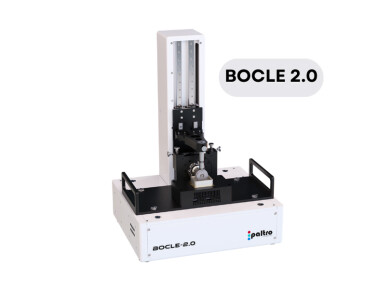Lubricant analysis
No Time for Downtime: Utilising Portable FT-IR Technology for In-Service Oil Condition Monitoring
May 16 2018
Lubrication is a vital component of machinery and, as with any component, early detection of wear is essential for timely replacement, avoiding unnecessary maintenance while reducing the risk of catastrophic breakdowns. Oil inevitably degrades with use and is exposed to various sources of contamination, both internal and external, which can lead to its degradation and reduced effectiveness in protecting machine components. Early identification of impending lubricant failure can prevent costly damage.
Infared (IR) analysis is a rapid, inexpensive test that can provide specific information about the chemical condition of the oil, also allowing inferences about the state of the machine component from which the sample was taken. IR measurements are sensitive to a number of additives, degradation products and potential contaminants which include:
Contamination
- Soot is a by-product of incomplete combustion and, while the oil may tolerate a significant concentration of soot, a greater-than-expected increase over time may indicate an incorrect fuel to air ratio, clogged air filters or an over-extended oil change period.
- The presence of water and glycol in the oil indicates a leak from the cooling system and requires urgent attention. Water alone may be due to condensation at low operating temperatures. Water in hydraulic systems may be due to condensation in oil reservoirs.
- Unburned fuel in the oil may indicate poor combustion. While fuel may be chemically rather similar to the lubricant base oil, the aromatic content of the fuel can allow a calibration to be developed.
Chemical degradation
- Oxidation occurs when oil is exposed to oxygen at elevated temperatures. These reactions produce thick, acidic oil which can lead to corrosion. Oil oxidation occurs slowly as sacrificial antioxidant additives are used up and then rapidly once the additives have been depleted.
- Nitric oxides are produced during combustion, and these can also oxidize the oil, leading to a thickening of the oil, varnish build-up and depletion of the oil base reserve. High levels of nitro-oxidation can indicate a number of engine faults and must be addressed quickly to prevent catastrophic failure.
- Acidic sulphur compounds can be produced during combustion if sulphur compounds are present as impurities or additive in the fuel or lubricant. Again, this leads to the depletion of basic additives and eventually to corrosion.
The Spectrum Two In-Service Lubricants FT-IR Analysis System from PerkinElmer provides the ruggedness and transportability needed for on-site measurements (Figure 1). For higher throughput and automated, unattended analysis, the PerkinElmer OilExpress family of instruments utilize high precision syringes and Spectrum Two FT-IR systems to process up to 100 samples per hour (example illustrated in Figure 2).
Trend data can be gathered by regular sampling to monitor engine performance and operating conditions. This allows the oil to be changed at optimal intervals, which has two major benefits. Costs are reduced by carrying out the oil change only when necessary and problems are identified early, which allows the appropriate preventative steps to be taken.
Digital Edition
PIN 26.1 Feb/Mar 2025
March 2025
Analytical Instrumentation - Elemental Analysis for Quality and Process Control at Refineries, for Lubricants and Wear Metals in Engine Oils - Synthetic Lubricants: New Developments - Scaling...
View all digital editions
Events
Apr 08 2025 Birmingham, UK
Apr 08 2025 Kielce, Poland
Apr 08 2025 Ravenna, Italy
Apr 08 2025 Southampton, UK
Apr 08 2025 London, UK
























